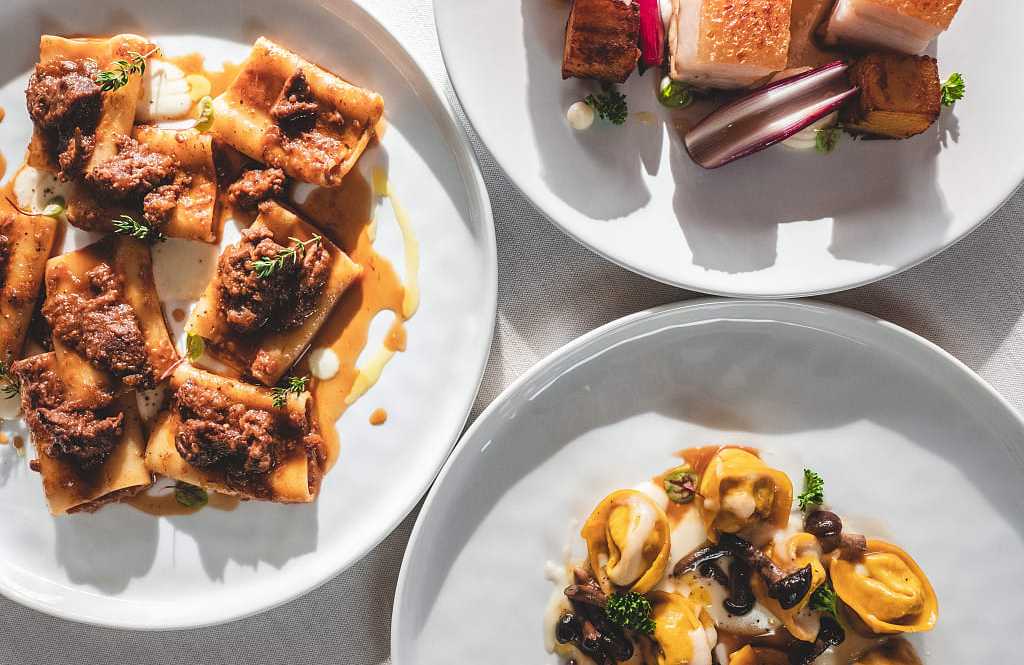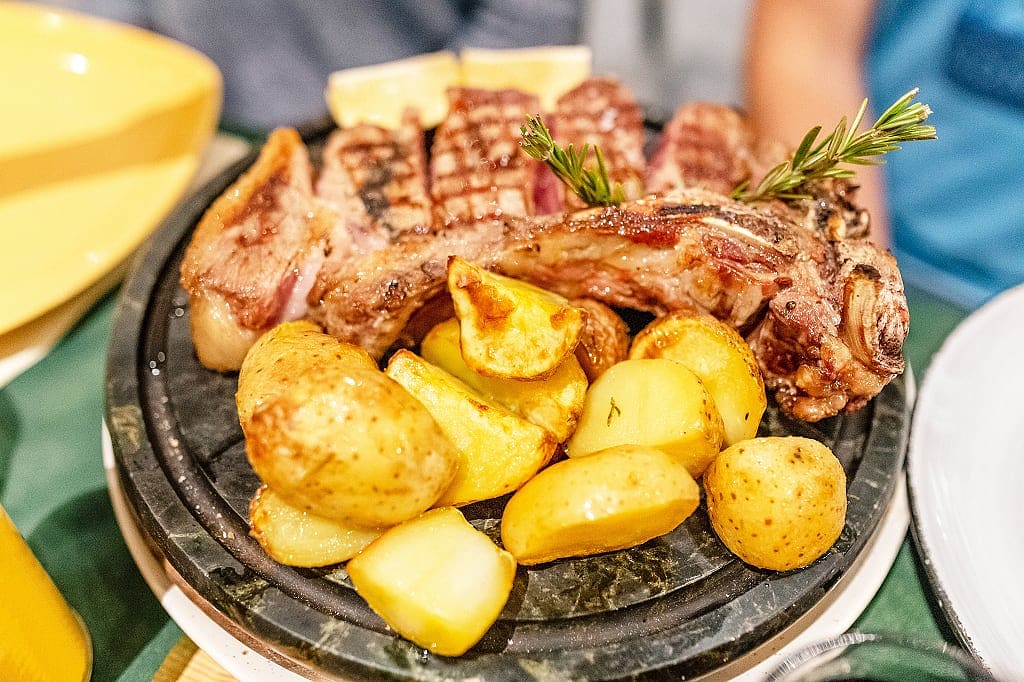The cuisine of northern Italy is essential to the spirit of Italian life that captures the specific culture. Local ingredients inform cooking style, with Italians using the landscape to create dishes that shape regional identity. While many people think of olive oil and spaghetti as staple Italian ingredients, northern Italian cuisine uses less of these, focusing more on butter, lard, and dairy-based cooking influenced by historically fluid borders, as well as occupations by the French and Habsburg empires.
Famous dishes of Northern Italy: Fontina cheese • Pesto bianco • Panettone • Risotto al nero di seppia • Panna cotta
Learn more: 4 Dishes to Try on Your Trip to Emilia-Romagna • 4 Best Cities to Explore the Food of Emilia-Romagna
Piedmont
Popular dishes of Piemonte, also known as Piedmont, highlight the alpine landscape, with its soft, rolling hills and the lush floodplains of the Po River. The multifaceted cuisine demonstrates the natural burst of flavors in recipes that contain prized white truffles, meats, and cheeses. Home and commercial chefs use the local bounty of freshwater fish and pasta dough throughout the year for a perfect representation of how seasonal and local ingredients can create essential tastes.
Liguria
The rugged coastline of Liguria makes the most of its position bordering the sea. The bounty of seafood, meaty mushrooms, and aromatics add to the luscious flavors of its cuisine. The Tyrrhenian Sea’s gorgeous turquoise waters, the mild climate of the rocky peaks, and the unique characteristics of the countryside, with its forests, pine trees, and sea air, add distinct flavor to harvested and wild ingredients.
Aosta Valley
The Aosta Valley is a small region at Italy’s most northwestern point that disrupts preconceptions of Italian cooking by using French, German, and Swiss influences that focus on cheeses, hearty stews, and plenty of butter. Rather than bread or pasta, home and commercial chefs use cornmeal to make polenta porridge. The tiny region in the forested and alpine terrain is known for skilled hunters and farmers who thrive on the local quality and variety of meat and agricultural products that represent the abundant, rich, regional ingredients.
Lombardy
Lombardy has less of a cohesive culinary culture than other regions of Italy due to boundaries that stretch from the river valleys in the south to the Alps in the north. Rice for risotto is the staple carbohydrate, with robust flavors deriving from spices like saffron, but the overall regional cuisine blends the ancient customs of Rome with the culinary traditions of the Lombard dynasty.
Learn more: 4 Dishes to Try While on Vacation in Milan
Trentino-Alto Adige/South Tyrol
Trentino-Alto Adige straddles the border between Italy and Germany. Home and commercial chefs draw inspiration from the region’s northeastern position, with delicacies shaped by the mountains, colorful summers, and chilly winters. The culture leans more toward the classic ideals of the Austro-Hungarian empire when nearing the eastern borders, while the southern valleys retain their connection to Italian agriculture, farming, and cuisine.
Friuli-Venezia Giulia
Friuli-Venezia Giulia is Italy’s most easterly region. Its cuisine adds Austrian, Central European, and Venetian elements to its culinary heritage to create a distinctive experience. The landscape shifts from north to south, east to west, with rugged mountains, stony hills, arid plains, lush fields, and flowing rivers leading to the Adriatic Sea. Dishes reflect the region’s proximity to Slavic countries and the former Austro-Hungarian Empire for flavors unlike any other region in Italy.
Veneto
Veneto touches the mountainous Austrian border and the Adriatic Sea. Its cuisine comprises dishes characterized by cold weather across the land and sea. Instead of pasta, regional dishes generally use risotto and polenta as their main source of carbohydrates, while fish and cheese play important but separate roles in the daily diet. Those on the shore focus on seafood and those in the mountains or on the plains use more agriculturally-rich ingredients, with the diversity revealing a history of the Venetian Republic, Austro-Hungarian Empire, and French reign across the region.
Learn more: 5 dishes to try during your trip to Venice
Emilia-Romagna
The region of Emilia-Romagna is the epicenter of Italian culinary heritage. Its cuisine constitutes the traditions of cucina povera and consists of ingredients like balsamic vinegar, Parmigiano-Reggiano cheese, and prosciutto. The diverse landscapes allow farmers to continue growing olives, producing cheese, and curing meats, or harvesting wild fruits and vegetables in most seasons. The bountiful and flavorful dishes build on the foundations of ancient Roman cooking and the culinary styles of the Byzantine Empire.
Learn more: 5 Best Meals and Dishes in Bologna












